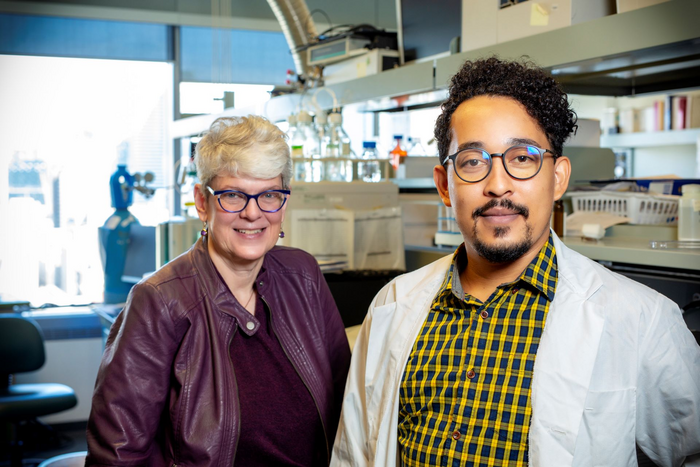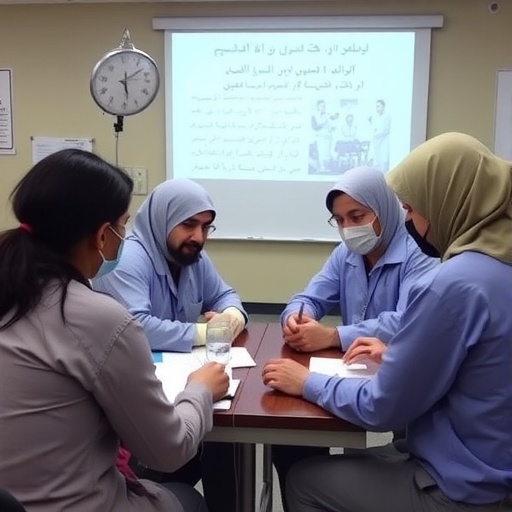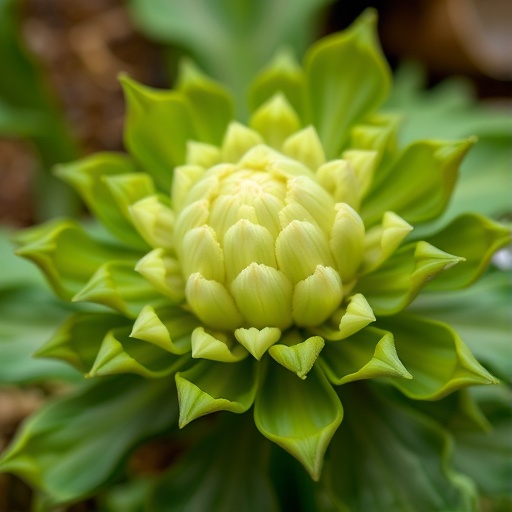Climate change and human activity have been putting pressure on water bodies worldwide, and Canada’s vast network of lakes is no exception. Over the past decades, increasing nutrient levels have led to a process called eutrophication, in the shallow lakes dotting Quebec’s Laurentian region north of Montreal. These changes have led to a surge in algae blooms, rendering the lakes unusable and possibly disrupting the natural ecosystem.

Credit: Concordia University
Climate change and human activity have been putting pressure on water bodies worldwide, and Canada’s vast network of lakes is no exception. Over the past decades, increasing nutrient levels have led to a process called eutrophication, in the shallow lakes dotting Quebec’s Laurentian region north of Montreal. These changes have led to a surge in algae blooms, rendering the lakes unusable and possibly disrupting the natural ecosystem.
Restoring these lakes to a healthier condition is a complicated and expensive undertaking, but a new method being investigated by Concordia researchers in the Department of Building, Civil and Environmental Engineering may cut down on both costs and labour in an environmentally friendly way.
Writing in the journal Water, the researchers describe a system of floating geotextile filters that efficiently remove suspended solids, algae and the nutrients from a shallow lake. While the project is still in development, the researchers say they believe it has the potential to scale up. This technology could then benefit the health of larger bodies of water such as ponds, rivers, coastal areas and bays.
The study is led by PhD student Antônio Cavalcante Pereira and Professor Catherine Mulligan. Research associate Dileep Palakkeel Veetil and Sam Bhat of Titan Environmental Containment are also contributors.
Non-chemical solutions
Over the summer and early fall seasons of 2019 and 2020, the researchers placed six geotextile layers in a floating filtration unit at Lac Caron. Lac Caron is a shallow eutrophic lake with a maximum depth of 2.6 metres located in Ste-Anne-des-Lacs, about 75 kilometres north of Montreal. The lake has been under a recreational advisory since 2008 due to excessive algae growth.
The Plexiglas filtration device was made to float by an inflatable rubber tube placed in the centre of an enclosed area. The area was cordoned off by using geotextile turbidity curtains. The specialized curtains hang down from the water surface to reach the lakebed, or near to it, to prevent suspended solid interactions with the rest of the lake.
Water samples from the lake and the contained areas were collected every two to three days. The specimens were then analyzed for levels of turbidity, suspended solids (TSS), phosphorus, blue-green-algae-phycocyanin (BGA-PC), chlorophyll-a and more.
The analysis results were encouraging.
The analysis results were encouraging, according to average removal efficiencies in 2019 and 2020. The researchers compared the filtered lake water to the non-filtered lake water and found the following:
- Turbidity reduced 53 per cent in 2019/17 per cent in 2020
- TSS by from 22 per cent/36 per cent
- Phosphorus by 49 per cent/18 per cent
- BGA-PC by 57 per cent/34 per cent
- Chlorophyll-a by 56 per cent/32 per cent.
Pereira says the year-over-year differences are the result of heterogeneous water quality in lakes due to distinct climate and algae growth patterns. A large, visible algae bloom was visible in 2019, while 2020’s algae was more dispersed throughout the whole water body.
“Expanding our system for large lake remediation is a long-term goal. But the novelty of this project is the that we just use the in-situ water filtration as a remediating method for eutrophic water bodies,” says Pereira. “We did not add any chemicals to the lake, but we still managed to get good results: algae suppression and turbidity decreases for an entire recreational season.”
An evolving long-term project
Mulligan adds that this paper is part of a series that is based on work that first began back in 2008. The project has gone through subsequent iterations over the years and in other lakes in the region.
The shallow lakes studied in the past were often created by developers excavating existing lakes and incompletely cutting down trees. However, several recent factors are contributing to recurring excessive algae growth. These factors include the continual degradation of fragmentary tree stumps, along with possible nutrient release from runoff and the lack of natural hydrological patterns.
“It can be a challenge because water quality changes from year to year,” says Mulligan. “When those eutrophic water bodies are subjected to warmer temperatures, they tend to be much more affected by excessive algal blooms.”
This research was funded by NSERC, Concordia University and Titan Environmental Containment.
Read the cited paper: “An In-Situ Geotextile Filtration Method for Suspended Solids Attenuation and Algae Suppression in a Canadian Eutrophic Lake”
Journal
Water
DOI
10.3390/w15030441
Method of Research
Experimental study
Subject of Research
Not applicable
Article Title
An In-Situ Geotextile Filtration Method for Suspended Solids Attenuation and Algae Suppression in a Canadian Eutrophic Lake
Article Publication Date
22-Jan-2023
COI Statement
The authors declare no conflict of interest.




